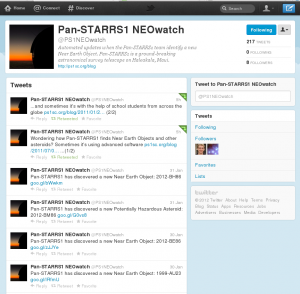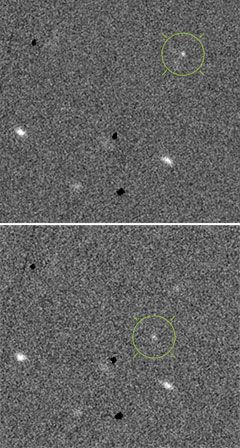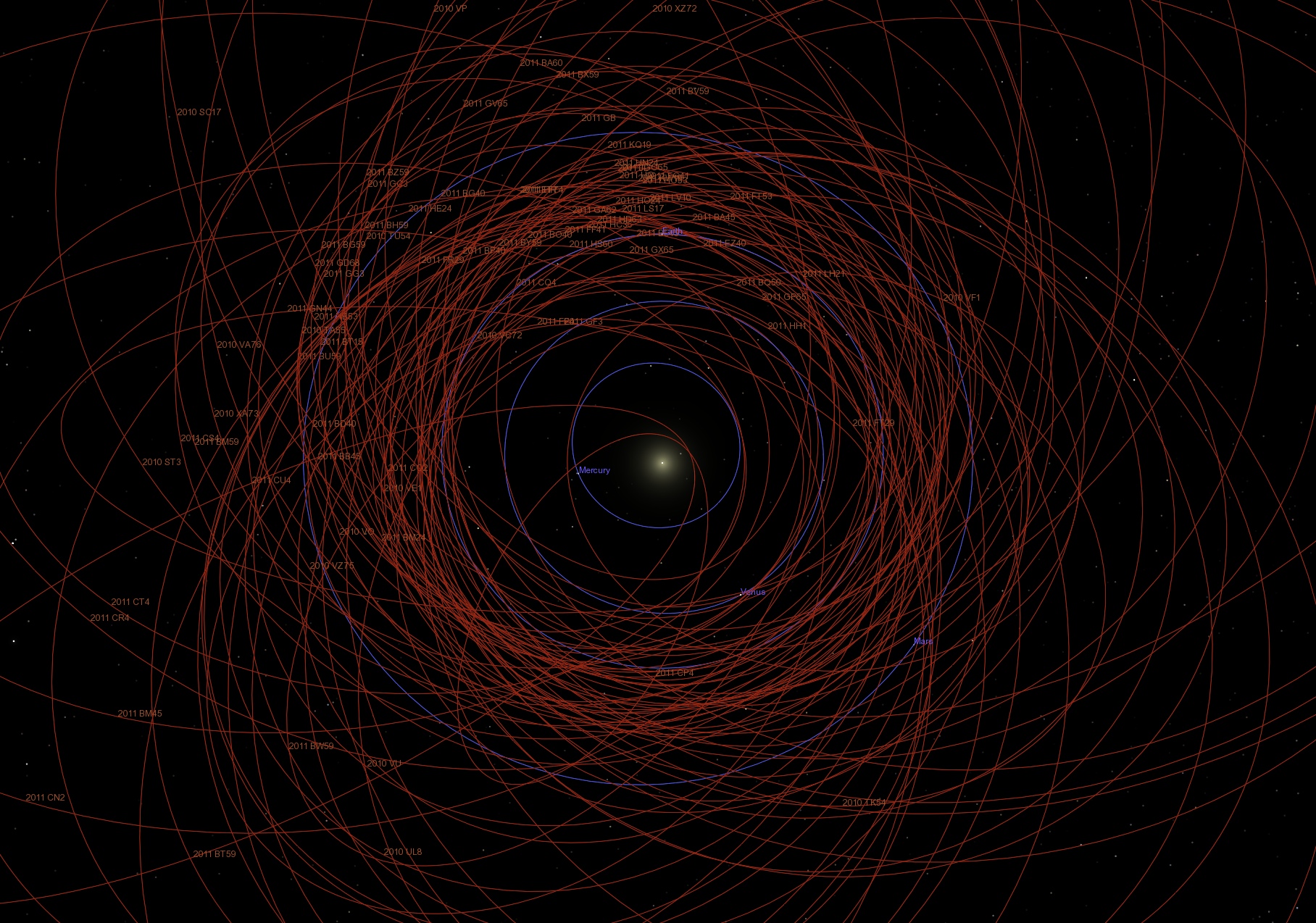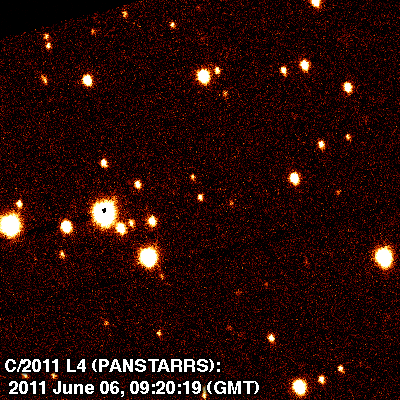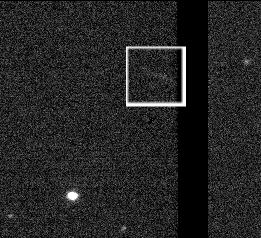German school students hunt for unknown asteroids
April 16th, 2012 by carolinliefke Tags: Asteroid, classroom astronomyIt’s March 15th 2012, the official start date of the fourth Pan-STARRS Asteroid Search Campaign of the International Astronomical Search Collaboration. Students from 40 schools - most of them from the United States and Germany, but also from Brazil, Bulgaria, England, India, Poland, and Taiwan - are ready to go. During the last few weeks, they practiced how to search for asteroids in astronomical images. Now they will have the opportunity to work with data from the Pan-STARRS PS1 telescope - and to discover several previously unknown objects in our solar system for the next five weeks.
The International Astronomical Search Collaboration (IASC) is a cooperation of American universities, international observatories, and educational partners with the aim to give students worldwide access to astronomical research data. Since October 2010, the Pan-STARRS PS1 Science Consortium semi-annually provides sets of images from the PS1 telescope to IASC. These data are full of so far unknown asteroids yet to be discovered - a job that is assigned to the schools that - partnered in teams - participate in IASC’s asteroid search campaigns. For the students, this project is a unique experience. They have exclusive access to the newest data from a professional telescope, and they can use it to learn how to apply scientifc methods. Finally, they have the chance to be the first to spot a celestial body no one else has ever seen before.
At the Haus der Astronomie in Heidelberg, I coordinate a growing network of German teachers who participate in the IASC campaigns with their students. We set up a Yahoo group where teachers and students can discuss problems or their findings with the other German-speaking groups. I also created German versions of the IASC manuals, and the Haus der Astronomie provides supplementary German-language educational material that the teachers can use in class to complement the asteroid search campaigns.
March 19th. Images taken on March 16th by the PS1 telescope are finally processed for the schools. The students download them, and, using the software Astrometrica, they search for moving objects and measure their positions on the sky. They report their findings to IASC, where the data is cross-checked with the results of Pan-STARRS’ automated search. And they are quite successful: The eight German schools supported by the Haus der Astronomie alone spotted a total number of 44 new asteroids. But for some of the students, just having discovery candidates is not enough. They want to do their own follow-up observations, in order to recover as many of their findings as possible.

Asteroid 2011 WC1 re-observed with Faulkes Telescopes after it was discovered by LGL student Julia Schnepf during the fall 2011 IASC Pan-STARRS asteroid search campaign.
The discovery of an asteroid is a three-step process: An initial candidate must be confirmed by further observations in order to get designated by the Minor Planet Center (MPC). The asteroid will finally be numbered when it can be monitored for several oppositions, a procedure that typically takes several years. And not till then, the discoverers are officially credited and are allowed to name it. Especially for the second step, follow-up observations are essential. This work is usually done by IASC astronomers, but my aim is to widen the project and to involve the students themselves in this process.
One of the German schools participating in the Pan-STARRS asteroid search campaigns is the Lessing-Gymnasium Lampertheim (LGL), which has a focus on natural sciences and is a member of the German STEM network MINT-EC. Since 2010, the LGL participates in a pilot project with the Faulkes Telescope Project (FT)in Germany, which started in 2004 with the focus on the coordination of asteroid observations. 650 positions of 115 asteroids have been measured and reported to the MPC until 2005; three asteroids have been discovered and designated, two of them have been numbered and named by students. Additional activities include photometry of the eclipsing binary asteroid (4492) Debussy. In the framework of this project, the LGL has access to the 2-meter telescopes of FT, which are perfectly suited for follow-up observations of the Pan-STARRS asteroids, which are typically fainter than magnitude 20. During the October 2011 IASC Pan-STARRS campaign, I therefore initiated a project together with teacher Martin Metzendorf and Lothar Kurtze from the German FT team, where students aged 12 to 17 plan and perform follow-up observations of the asteroids discovered during the Pan-STARRS campaign within regular physics classes or at the astronomy club of the LGL.
Doing their own observations provides the ultimate hands-on experience for the students. Telescope time at FT is booked in advance, but for reasonable follow-up observations, their candidates must be caught within the next few days after their initial discovery. So first of all, the students learn how important it is to be as fast as possible with the analysis of their Pan-STARRS data. They can use the position measurements of their own Pan-STARRS discoveries or data from the other groups to calculate a preliminary ephemeris of these asteroids with MPC tools. This way, coordinates where the telescope should be pointed at for recovery can be predicted. Additionally, observing with FT means that the students themselves are responsible for controlling the telescope and its camera. Subsequently, they analyse the obtained images like they did for the Pan-STARRS data. Finally, the positions they measure for the recovered asteroids are checked by the FT team and sent to the MPC.
Something else happens on March 19th. The PS1 telescope itself points at the same region of the sky it did three nights ago, thus matching the images the students got. As a result, the schools supported by the Haus der Astronomie can celebrate the confirmation of 12 of their candidates already during the first week of the Pan-STARRS campaign - what an outstanding start.
Nevertheless, the LGL students are well-prepared. On April 3rd they started their follow-up observations with FT during this campaign, and already during their first run, they were able to recover two candidates. Additionally, they plan to monitor the designated asteroids discovered by German schools during previous campaigns in order to get them numbered.


